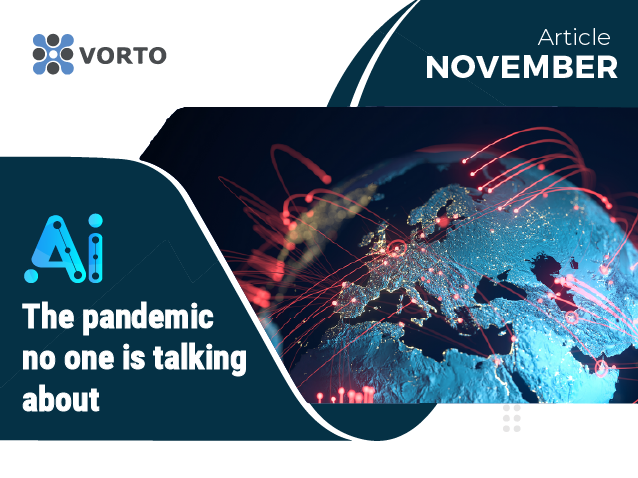AI, the pandemic that no one is talking about
There is no denying that Artificial intelligence impacts our day-to-day and is right now, in this very instant, impacting the future of every human being and every industry. According to Technology Review, it was AI that first predicted Covid19. It was precisely December 30th when BlueDot; an artificial-intelligence company that uses machine learning to monitor the outbreaks of disease across the world, alerted its client base of governments, businesses, and hospitals that there was an unusual increase in cases of pneumonia in Wuhan, China. Nine days later, the World Health Organization flagged Covid19. A global pandemic ensued.
Yet if we question methodologically, how pandemics start, we would break down that journey to see that it is a series of patterns and movements. It builds to formulate a trend. The global pandemic started as a small cluster in Wuhan, then it grew in size and swiped across China and then eventually the entire globe.
For the best part of two years, we have been studying and predicting the ‘before, during and after’ of Covid 19. Yet, one series of movements we have been living with and arguably paying considerably less attention to is AI.
In the same way that Covid 19 changed our lives forever, AI is set to impact the way we live heavily. The idea that artificial intelligence will one day take over the world is something that scientists, entrepreneurs, leaders in technology, research companies, and businesses have been stating for years. In America, CBS News has reported that AI could replace 40 percent of the workplace in the next 15 to 25 years. PwC mirrors similar findings that by halfway through the 2030s, 30 percent of jobs could be automated.
However, we have been living with AI for decades. Whether that is in reality or in science fiction, it has long been a part of our narrative and wider collective consciousness. If we rewind back to the first half of the 20th century, science fiction first started to depict the concept of artificially intelligent robots with the ‘heartless’ tin man from the Wizard of Oz and the humanoid robot that impersonated Maria in Metropolis. Author Mo Gawdat explores this in this new book ‘Scary Smart’ where he details that technologies have traditionally been presented to us through the form of science fiction. One comparison we can make is to think about our daily lives today with Smart Phones where we have interfaces and can see other people in real-time. If we look back to Star Trek in 2004, where Tom Cruise was shown on an interface, it very much was the primary interface and at the time it felt new and almost impossible to imagine. Now it is our daily reality. It is a pandemic that is unfolding before us and yet we are not talking about it enough. It almost seems so obvious that we miss it.
This presents us with a theme when it comes to AI. We can see it coming. Yet more importantly and in the words of Mo Gawdat, ‘we do not recognize how big it is coming, and how the impacts of AI will fundamentally transform the lives of the planet and our children moving forward.
In 2021, Oberlo shared that AI has grown by 270 percent across business sectors in the last 4 years. The reality is, AI is a trend and movement that is gaining momentous speed and is moving way beyond the boundaries of being mere sci-fi fantasies but rather, a reflection of the quotidian human existence.
This presents us with an even greater opportunity. How do we embrace this growing trend for AI and ensure it becomes something that supports and aids humans? The answer is to raise this new super-intelligence with human qualities including empathy and compassion. For this new future, we need to be prepared and we need to be human.
